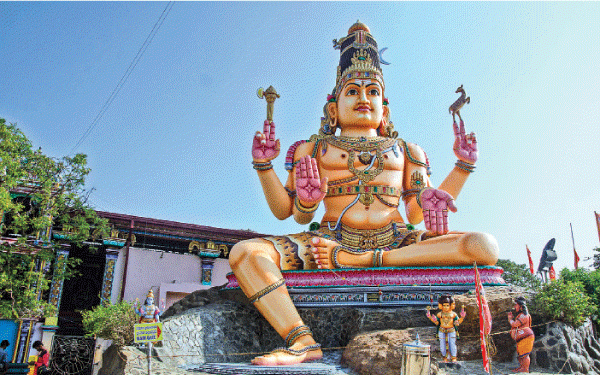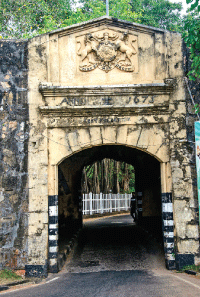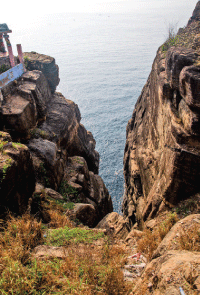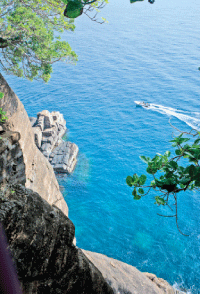
Trincomalee is a major city along the East Coast, whose harbour is considered one of the best sheltered on earth and one of the most interesting and beautiful places in Lanka. Trincomalee, north of the great Koddiyar Bay, is indeed a magnificent natural harbour, occupying a strategic position in the Bay of Bengal.
 |
| Fort Frederick |
There is Cod Bay, Yard Cove Bay, China Bay and Sober Islands. Sri Lanka’s longest and largest river, draining the central hills, the Mahaweli, enters the sea at Mutur, south of the circular bay.
Horatio Nelson
Back in 1775, a teenaged midshipman named Horatio Nelson arrived in Trincomalee harbour aboard the H. M. S. Seahorse. Later, as Admiral of the British Navy, he remembered it as ‘the finest harbour in the world.’ Indeed, with 53 kilometres of shoreline locked in by hills on three sides and protected by islands on the fourth, it is hard to argue with. In size, Trincomalee is the world’s fifth largest natural harbour.
 |
| The Lovers’ Leap |
During the Second World War, the Trincomalee harbour was the home base for the combined East Asian fleets of all Allied powers. It remained a British Royal Navy base for many years after.
The Japanese staged an air assault on the harbour on April 8, 1942. But the Allied Forces – having been previously alerted to the raid – had sent the fleet to sea, and only two ships, one merchant vessel, were destroyed in the harbour by Japanese bombs and gunfire.
Fort Frederick
Fort Frederick, sits on a promontory at the east side of Trincomalee town. The site was first used by the Portuguese (1624) and later by the Dutch, whose gateway bears the date 1676. The British named it in honour of Frederick, Duke of York in 1803. A century and a half of British fortifications can be found around the fort grounds.
 |
| The Swami Rock |
At the northeastern most tipoff the Fort Frederick’s promontory is a cliff known as Swami Rock, dropping about 360 feet (110 metres) directly into the sea. On its topmost pinnacle is the Tirukonesvaram Hindu Kovil, rebuilt on the site of the fabled ‘Great Pagoda’ temple that was destroyed in the 17th Century by the Portuguese.
Trincomalee may take its name from the site of this temple – perhaps from the Tamil words tiri kona malai, ‘mountain sacred to Konesvara (Shiva).’ One pillar from the ‘Great Pagoda’ still stands at the top of Swami Rock.
lovers’ leap
It perpetuates an apparently unfounded Dutch legend about a lovers’ leap. According to the inscription, a beautiful Dutch maiden named Frabcina van Rhede cast herself from the cliff as she watched her lover, a seaman sail away.
Across the peninsula from Fort Ostenburg overlooks the entrance to the Inner Harbour from the top of Eastern Hill. It was originally built by Dutch but only British fortifications are visible today.
